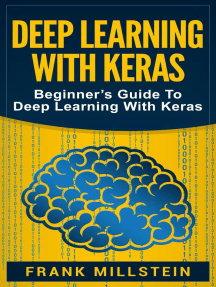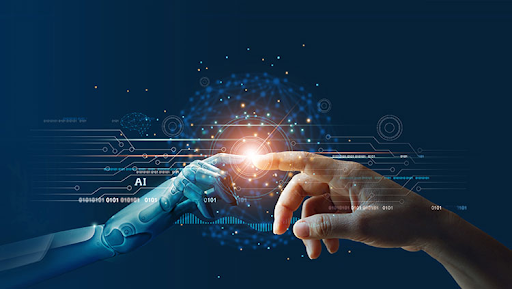
How data science and Artificial Intelligence work together to enhance your business's performance is key. Data science is the use of algorithms and data to identify patterns in data. Machine learning makes use of algorithms to predict future results from existing data. Many companies employ machine learning techniques to improve their processes. However, not every company can benefit from both these technologies. Both techniques can help you increase your business' productivity.
Data science is the basis of data mining
Data mining is a process used by businesses to extract useful information from massive amounts of data. It involves matching data coming from different sources. This includes cleaning and removing corrupt data, normalizing, and constructing attributes. It also includes using mathematical modeling to analyze the data. Data mining provides end users with easily understandable results. These findings can be used for business decisions and strategic planning. Data science, a branch in computer science that includes data mining, has many applications.
Many industries, such as insurance, rely on data mining to make informed decisions and price their products competitively. Higher education institutions also need reliable and accurate information to meet the demands of an increasingly competitive market. Data mining is used by these institutions to analyze student data and improve their services. Although fraud detection used to be time-consuming and costly, businesses can now use data mining techniques to identify fraudulent behavior as well as other potential risks. These methods are becoming increasingly common and can help businesses become more efficient.

Artificial intelligence is the basis of machine learning
AI, a branch of computer sciences that uses machine learning for data analysis, is a subfield of computer science. While this field is still young, it is allowing companies to do amazing things. It can personalize messages and create digital advertising programs. Additionally, it can optimize pricing based upon competitive factors. It can also enhance supply chain management. In addition, AI can enhance network security and protect against cyber attacks.
It works by feeding data into a computer to interpret and analyze the data. The computer learns using statistical methods without the need to code millions of lines. There are two main types, supervised and unsupervised, of machine learning. Deep learning is a type of machine learning that runs inputs through a biologically-inspired neural network architecture. This allows the machine's ability to "deepen" its learning and make connections that will lead to the best possible results.
Outlier detection
Machine learning and data mining are great ways to spot outliers. These are numbers that are unusually high or low in a dataset. Outliers can be caused by a variety of different factors, such as human error or errors in the collection and measurement of the data. Some outliers have been created intentionally to test outlier detection techniques. Others are natural, representing dataset novelty.
There are many methods of outlier detection, but one of the most common is the Isolation Forest algorithm. This algorithm partitions the data multiple times until it finds an outsider. Normal data may require several random partitions. Outliers will only need one. The tree-like nature of the data divisions is the reason for the name of this algorithm. Outlier detection algorithms are able identify outliers that would otherwise go unnoticed.

Machine learning can help you find anomalies within data.
Anomalies refer to data that is different from the norm. A tumor, for example, might have different cell distributions than a normal person's tumor. There are many causes for these anomalies. Cancer and other diseases can cause cells to grow beyond their normal ranges, creating outliers in the data. These outliers can be detected without the involvement of humans.
The first step to identify anomalies is to label the data. While a single point could be considered anomalous, it might not be an unusual situation in another context. Another kind of anomaly is the "collective type", which is an anomaly in a data set as a whole. When the set of data instances in question is labeled, the outliers are often spotted.
FAQ
What does AI mean today?
Artificial intelligence (AI), also known as machine learning and natural language processing, is a umbrella term that encompasses autonomous agents, neural network, expert systems, machine learning, and other related technologies. It's also called smart machines.
Alan Turing, in 1950, wrote the first computer programming programs. He was interested in whether computers could think. He proposed an artificial intelligence test in his paper, "Computing Machinery and Intelligence." The test asks whether a computer program is capable of having a conversation between a human and a computer.
John McCarthy, in 1956, introduced artificial intelligence. In his article "Artificial Intelligence", he coined the expression "artificial Intelligence".
There are many AI-based technologies available today. Some are easy to use and others more complicated. They can be voice recognition software or self-driving car.
There are two main types of AI: rule-based AI and statistical AI. Rule-based uses logic to make decisions. To calculate a bank account balance, one could use rules such that if there are $10 or more, withdraw $5, and if not, deposit $1. Statistic uses statistics to make decision. For example, a weather prediction might use historical data in order to predict what the next step will be.
Are there potential dangers associated with AI technology?
It is. There will always be. AI is a significant threat to society, according to some experts. Others argue that AI is not only beneficial but also necessary to improve the quality of life.
AI's greatest threat is its potential for misuse. If AI becomes too powerful, it could lead to dangerous outcomes. This includes robot dictators and autonomous weapons.
AI could also take over jobs. Many people fear that robots will take over the workforce. Others think artificial intelligence could let workers concentrate on other aspects.
Some economists even predict that automation will lead to higher productivity and lower unemployment.
How do you think AI will affect your job?
AI will replace certain jobs. This includes drivers of trucks, taxi drivers, cashiers and fast food workers.
AI will create new jobs. This includes those who are data scientists and analysts, project managers or product designers, as also marketing specialists.
AI will simplify current jobs. This includes doctors, lawyers, accountants, teachers, nurses and engineers.
AI will improve efficiency in existing jobs. This includes jobs like salespeople, customer support representatives, and call center, agents.
Who invented AI?
Alan Turing
Turing was conceived in 1912. His father was a clergyman, and his mother was a nurse. He excelled in mathematics at school but was depressed when he was rejected by Cambridge University. He began playing chess, and won many tournaments. After World War II, he worked in Britain's top-secret code-breaking center Bletchley Park where he cracked German codes.
He died in 1954.
John McCarthy
McCarthy was born on January 28, 1928. He was a Princeton University mathematician before joining MIT. There, he created the LISP programming languages. In 1957, he had established the foundations of modern AI.
He died in 2011.
Statistics
- That's as many of us that have been in that AI space would say, it's about 70 or 80 percent of the work. (finra.org)
- In the first half of 2017, the company discovered and banned 300,000 terrorist-linked accounts, 95 percent of which were found by non-human, artificially intelligent machines. (builtin.com)
- By using BrainBox AI, commercial buildings can reduce total energy costs by 25% and improves occupant comfort by 60%. (analyticsinsight.net)
- More than 70 percent of users claim they book trips on their phones, review travel tips, and research local landmarks and restaurants. (builtin.com)
- Additionally, keeping in mind the current crisis, the AI is designed in a manner where it reduces the carbon footprint by 20-40%. (analyticsinsight.net)
External Links
How To
How to set Cortana up daily briefing
Cortana in Windows 10 is a digital assistant. It is designed to help users find answers quickly, keep them informed, and get things done across their devices.
The goal of setting up a daily briefing is to make your personal life easier by providing you with useful information at any given moment. Information should include news, weather forecasts and stock prices. It can also include traffic reports, reminders, and other useful information. You can choose what information you want to receive and how often.
Win + I, then select Cortana to access Cortana. Click on "Settings", then select "Daily briefings", and scroll down until the option is available to enable or disable this feature.
If you've already enabled daily briefing, here are some ways to modify it.
1. Open the Cortana app.
2. Scroll down until you reach the "My Day” section.
3. Click the arrow near "Customize My Day."
4. Choose the type of information you would like to receive each day.
5. You can change the frequency of updates.
6. Add or remove items from your shopping list.
7. Save the changes.
8. Close the app